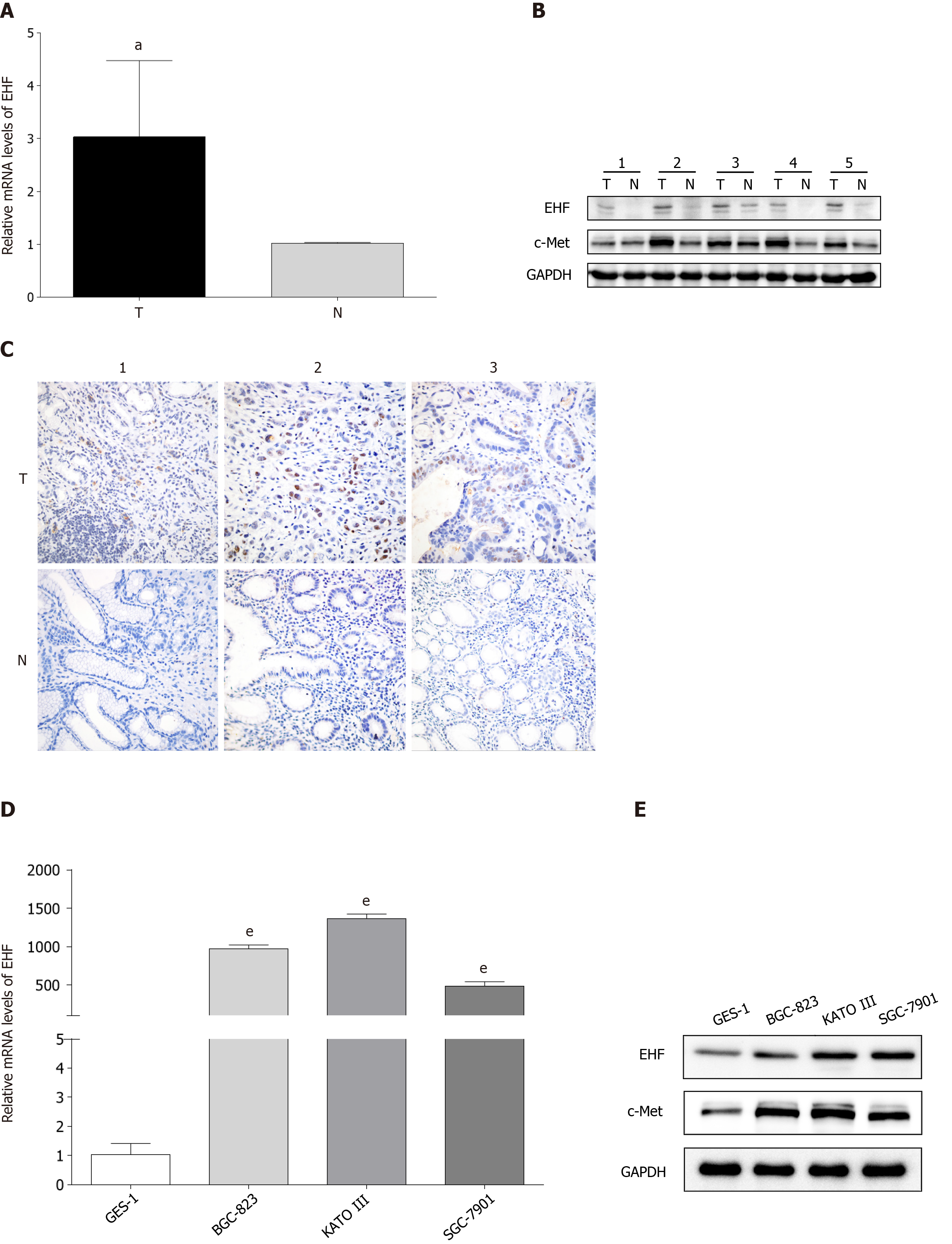Copyright
©The Author(s) 2020.
World J Gastroenterol. Dec 21, 2020; 26(47): 7497-7512
Published online Dec 21, 2020. doi: 10.3748/wjg.v26.i47.7497
Published online Dec 21, 2020. doi: 10.3748/wjg.v26.i47.7497
Figure 1 ETS homologous factor and c-Met expression in gastric cancer tissues and cell lines.
A: Quantitative PCR analysis of mRNAs revealed the upregulation of ETS homologous factor (EHF) mRNA in gastric cancer (GC) tissues compared with their matched adjacent tissues; B: Western blotting results showed that the expression of EHF and c-Met were both upregulated in GC tissues; C: Immunohistochemical staining of EHF indicated that increased expression of EHF was higher in GC tissues than that in matched adjacent tissues (400 ×); D: The mRNA expression level of EHF was enhanced in GC cell lines compared with that in normal gastric epithelial cells; E: EHF protein expression was increased in GC cell lines in which c-Met was also upregulated. aP < 0.05 vs matched adjacent tissues; eP < 0.001 vs normal gastric epithelial cells. T: GC tissues; N: Matched adjacent tissues.
- Citation: Gu ML, Zhou XX, Ren MT, Shi KD, Yu MS, Jiao WR, Wang YM, Zhong WX, Ji F. Blockage of ETS homologous factor inhibits the proliferation and invasion of gastric cancer cells through the c-Met pathway. World J Gastroenterol 2020; 26(47): 7497-7512
- URL: https://www.wjgnet.com/1007-9327/full/v26/i47/7497.htm
- DOI: https://dx.doi.org/10.3748/wjg.v26.i47.7497









